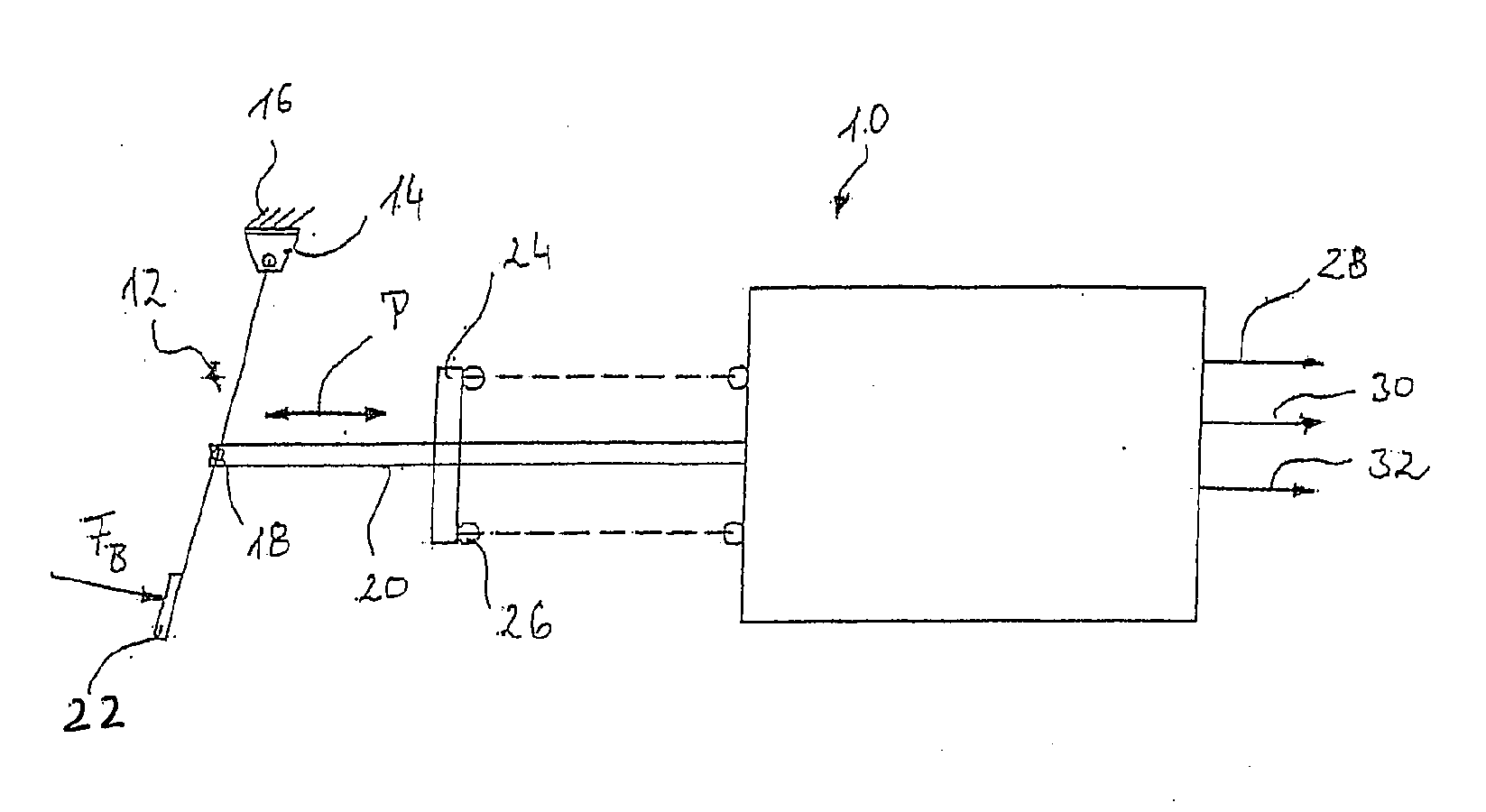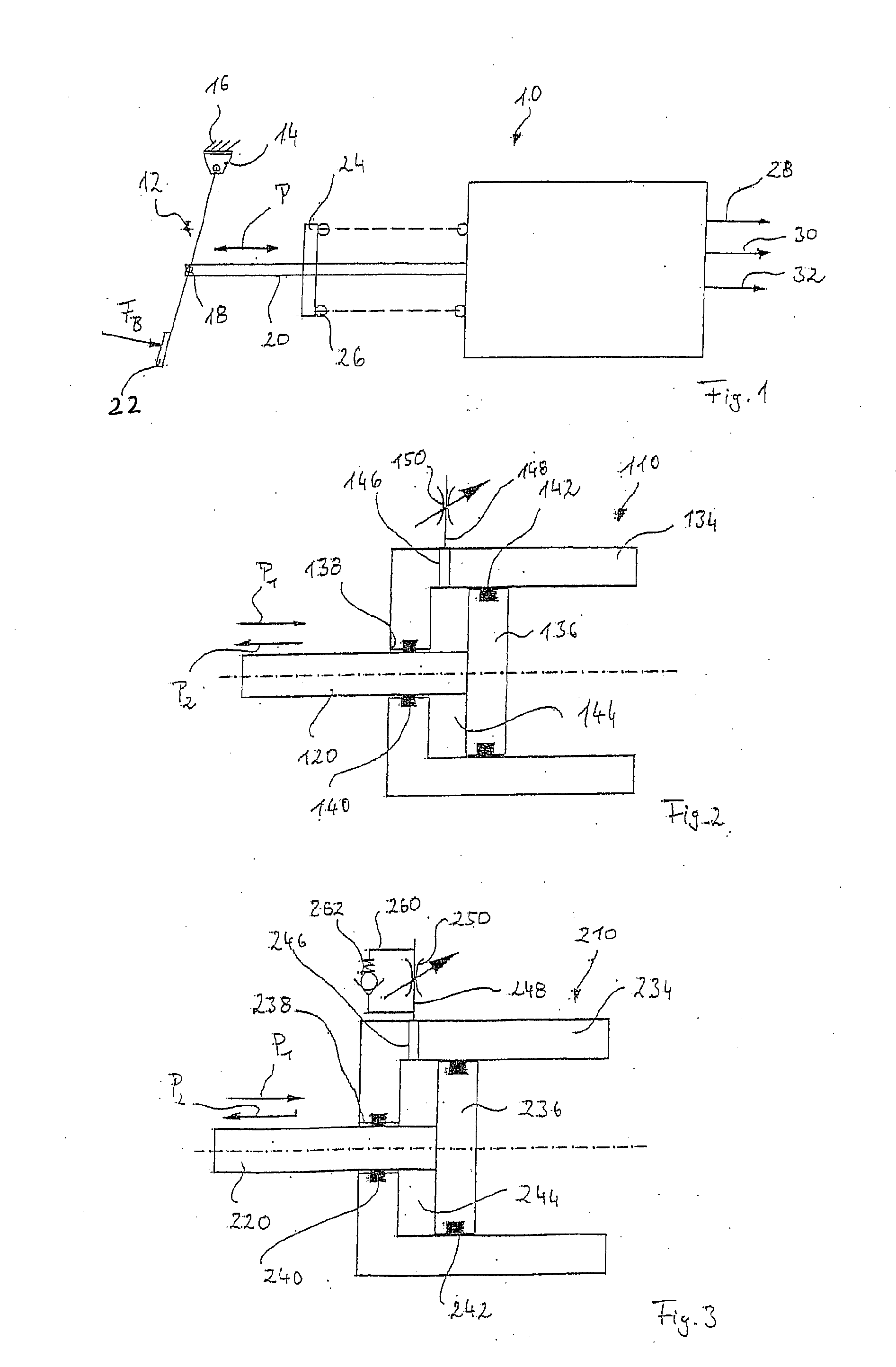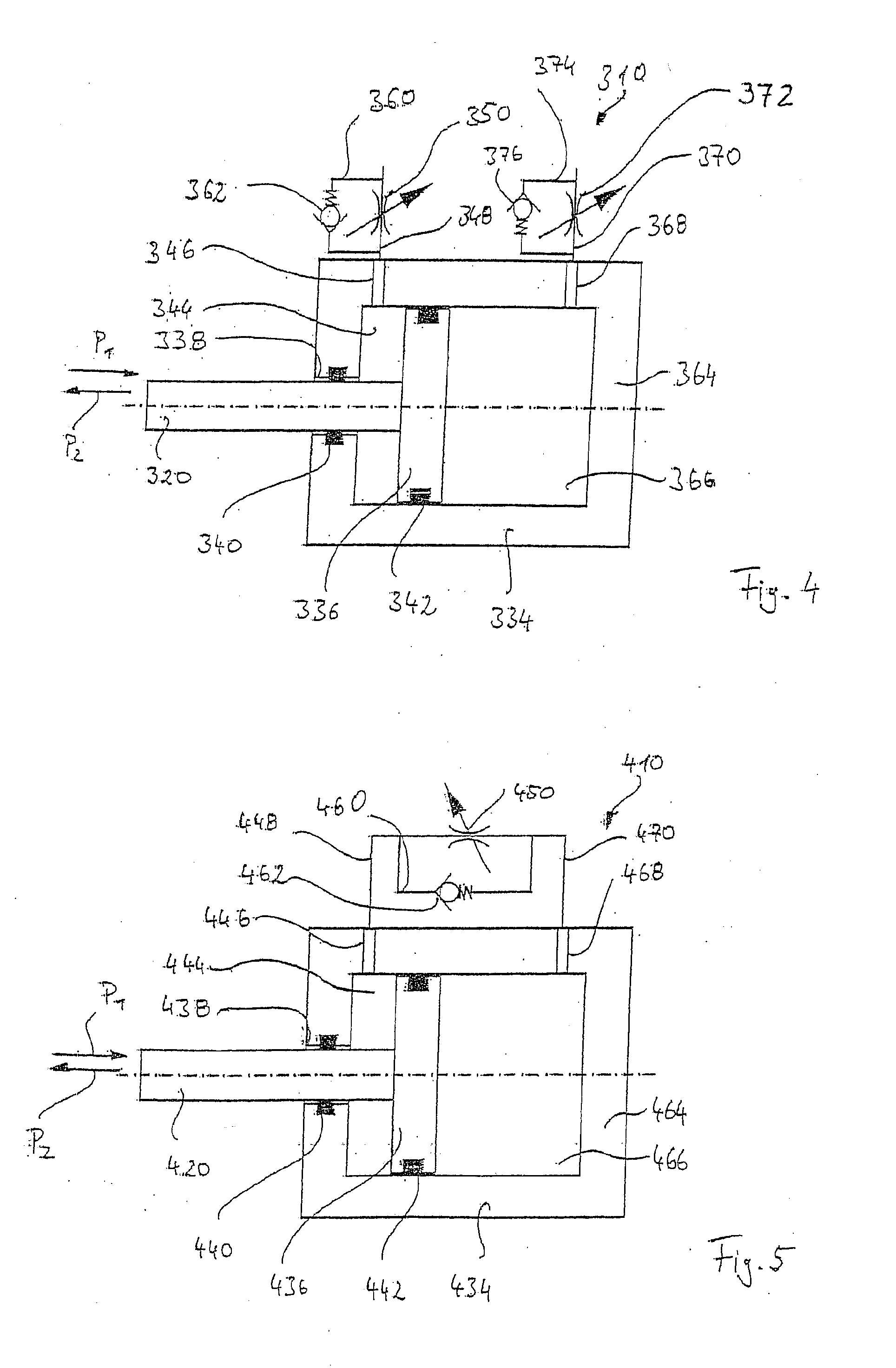Pedal simulation device
a simulation device and pedal technology, applied in mechanical control devices, brake systems, controlling members, etc., to achieve the effect of reducing damping, high resistance, and reducing hysteresis
- Summary
- Abstract
- Description
- Claims
- Application Information
AI Technical Summary
Benefits of technology
Problems solved by technology
Method used
Image
Examples
first embodiment
[0032]The first embodiment shown in FIG. 2 shows a pedal simulation device 110 comprising a cylinder 134, which is open at one end and has a working piston 136 guided therein. The working piston 136 is coupled to the actuating rod 120 for joint movement. The actuating rod 120 extends through an axial opening 138, wherein in the axial opening a sealing ring 140 is disposed. The effect achieved by the sealing ring 140 is that the actuating rod 120 may be moved axially back and forth in a fluid-tight manner inside the axial opening 138, as is represented in FIG. 2 by arrow P.
[0033]A sealing ring 142 is provided also at the peripheral surface of the working piston 136 facing the inner wall of the cylinder 134, so that the working piston 136 may also be moved back and forth in a fluid-tight manner inside the cylinder 134 together with the actuating rod 120.
[0034]The cylinder 134 together with the working piston 136 and the actuating rod 120 therefore enclose an annular working chamber 14...
second embodiment
[0045]In operation, the pedal simulation device 210 according to FIG. 3 therefore behaves differently to the pedal simulation device 110 according to FIG. 2 in that, upon a resetting movement of the actuating rod 220 and hence of the working piston 236 in accordance with arrow P2, the air contained in the working chamber 244 may pass substantially unimpeded into the ambient atmosphere, wherein the throttle device 250 is bypassed by means of the bypass line 260. This means that the brake pedal 12 may move under the action of the spring 26 and substantially without damping by the throttle device 250 relatively quickly into its normal position. On the other hand, the throttle device 250 in the second embodiment according to FIG. 3 acts in the same way as the embodiment according to FIG. 2 because, when air from the ambient atmosphere is taken into the working chamber 244, the non-return valve 262 closes and prevents a flow of air through the bypass line 260.
third embodiment
[0046]FIG. 4 shows the pedal simulation device 310 according to the invention. The same reference characters are used for the identical or equivalent components as with regard to FIGS. 1 to 3, only with the number “3” placed in front.
[0047]The third embodiment according to FIG. 4 differs from the second embodiment according to FIG. 3 in that the cylinder 334 is no longer open at one end but is closed at its end remote from the actuating rod 320 by the end wall 364. In the cylinder 334 there is therefore, in addition to the working chamber 344, a complementary working chamber 366 that is delimited at one end by the working piston 336. Opening into this complementary working chamber 366 close to the end wall 364 is a further radial opening 368. The radial opening 368 communicates with a fluid line 370, which comprises, on the one hand, a throttle channel with an adjustable throttle device 372 and, on the other hand, a bypass channel 374 with a non-return valve 376. The non-return valv...
PUM
 Login to View More
Login to View More Abstract
Description
Claims
Application Information
 Login to View More
Login to View More - R&D
- Intellectual Property
- Life Sciences
- Materials
- Tech Scout
- Unparalleled Data Quality
- Higher Quality Content
- 60% Fewer Hallucinations
Browse by: Latest US Patents, China's latest patents, Technical Efficacy Thesaurus, Application Domain, Technology Topic, Popular Technical Reports.
© 2025 PatSnap. All rights reserved.Legal|Privacy policy|Modern Slavery Act Transparency Statement|Sitemap|About US| Contact US: help@patsnap.com



